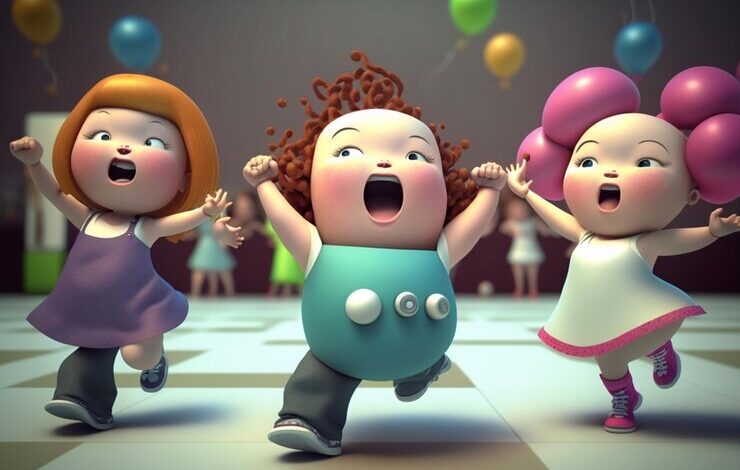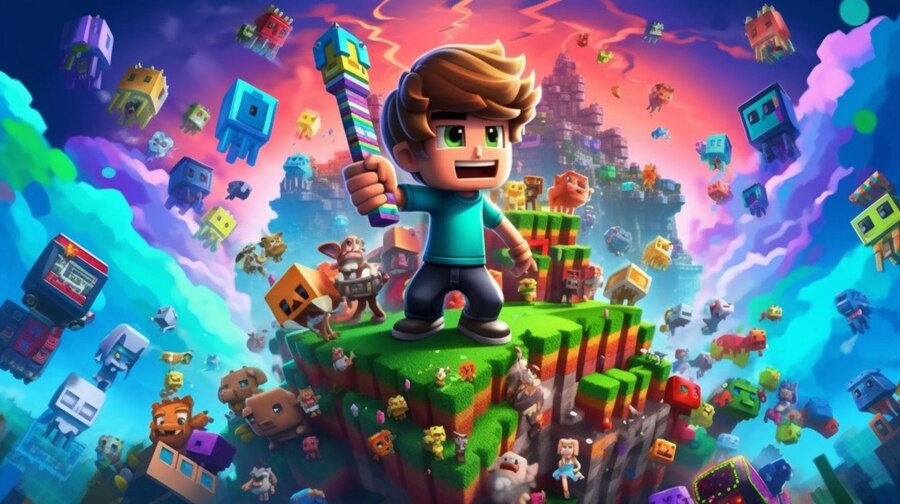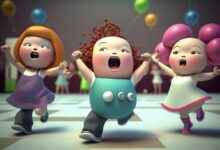minecraft (2009) game icons banners: A Comprehensive Guide

Minecraft, since its inception in 2009, has evolved from a simple sandbox game into one of the most influential and beloved video games of all time. What began as an indie project by Markus “Notch” Persson quickly grew into a global phenomenon, captivating millions of players around the world. Part of the game’s enduring popularity lies in its deeply customizable nature, where players can express themselves creatively, build incredible structures, and immerse themselves in a vibrant online community.
One of the ways players personalize their Minecraft experience is through the use of game icons and banners. These elements play a significant role in how players represent themselves, their worlds, and their in-game factions. From displaying clan emblems to creating intricate visual symbols of personal achievement, Minecraft’s icons and banners are a form of digital art that enhances the game’s rich social experience.
In this article, we will explore the evolution of minecraft (2009) game icons banners, the significance of these visual elements, how to create and use them, and why they remain an integral part of the Minecraft experience.
The Evolution of Minecraft Icons
Since its early days, Minecraft has had a distinctive visual style, characterized by simple, blocky graphics and pixelated icons. As the game gained popularity, Mojang, the developers behind Minecraft, began introducing more icons to represent different in-game items, blocks, mobs, and gameplay elements. These icons have not only helped players navigate the game world but also become iconic symbols of Minecraft’s unique charm.
Early Minecraft Icons (2009-2011)
When Minecraft was first released in 2009, its visuals were relatively rudimentary. The game featured a simple user interface (UI) with basic icons representing in-game blocks, items, and tools. The inventory system, for instance, used pixelated images to depict the various materials players could collect, such as wood, stone, iron, and coal.
The early icons were designed to be simple and functional, in keeping with the game’s minimalist aesthetic. These early icons set the tone for the rest of the game’s visuals, which would continue to focus on ease of use and clarity.
The Rise of Custom Icons and Modding (2011-2014)
As Minecraft’s player base grew, so did the demand for customization. The modding community began to flourish, leading to the creation of custom resource packs and texture packs that allowed players to alter the game’s icons and visuals. This period saw the rise of custom icon packs that changed the appearance of inventory icons, player skins, and even the game’s environment. Players could create their own art and represent themselves through personalized icons that reflected their individual style or themes, such as fantasy, sci-fi, or medieval designs.
Modern Minecraft Icons (2014-Present)
With the release of Minecraft: Windows 10 Edition and the Minecraft Bedrock Edition, the game’s icon system evolved to accommodate newer platforms and more complex mechanics. The iconography became more polished, with higher-quality graphics and a broader range of in-game icons that better represent the game’s expanded features, such as new mobs, biomes, blocks, and crafting recipes.
In addition, Minecraft introduced achievement icons, emotes, and badges for players to earn and display, adding further personalization options.
Today, Minecraft’s icons are used not only for gameplay but also for branding purposes. The iconic Minecraft logo—which features the blocky font and pixelated font design—has become synonymous with the game itself. Icons in the game now serve both functional and artistic roles, enhancing the player’s experience and providing additional layers of personalization.
The Importance of Minecraft Banners
While icons are more commonly used in the game’s UI, banners serve as a more prominent form of visual representation in the Minecraft world. Banners allow players to display their creativity, either by creating custom designs to represent their in-game identity or to communicate their allegiance to a particular faction or group. The use of banners is widespread, especially in multiplayer servers, where players create unique guild banners, clan symbols, or team flags.
What Are Minecraft Banners?
Banners in Minecraft are decorative blocks that can be customized with various patterns and colors. Players can create banners by combining wool and sticks in the crafting table, and once crafted, the banner can be further altered with dyes and patterns. The possibilities for banner designs are endless, and players often experiment with different combinations to create intricate and beautiful designs that reflect their unique style.
The Banner Crafting System
To craft a banner, players need the following items:
- 6 Wool (any color)
- 1 Stick
To create custom patterns on the banner, players use dyes and a crafting table to apply specific designs. The game’s banner crafting system uses a variety of techniques, including stripes, crosses, diamonds, and more, to create distinct symbols that players can display on their banners.
There are multiple ways to customize a banner with patterns, such as:
- Base Patterns: Horizontal and vertical stripes, gradients, chevrons.
- Shapes and Symbols: Diagonal crosses, circles, stars, and more.
- Color Combinations: A wide variety of colors can be applied to create vibrant, eye-catching designs.
By experimenting with different combinations of these patterns and colors, players can create banners that represent their personal brands, factions, teams, or adventures in the game.
Banners in Multiplayer Servers
In multiplayer servers, banners often serve as faction symbols or team flags. For example, players might design a banner with a unique pattern to represent their guild or clan, and these banners would be displayed on their bases, castles, or PvP areas. Banners can also be used to mark important locations, such as spawn points, territories, or battlefields. This helps players easily identify their allies and enemies, and adds a layer of immersion to the game’s social aspects.
Banner Designs for Special Events and Achievements
Banners can also be used to commemorate special in-game events or personal achievements. For instance, players may design a banner to mark the completion of a challenging Minecraft achievement or to celebrate an in-game milestone, such as defeating the Ender Dragon or discovering a new biome.
These banners serve not only as visual markers but also as a way for players to share their accomplishments with others. In the multiplayer world of Minecraft, custom banners are a way to show off personal achievements, and they add an element of pride and individuality to the game’s social dynamics.
How to Create Your Own Minecraft Icons and Banners
Creating Custom Minecraft Icons
While Minecraft doesn’t have a native feature for creating custom icons (outside of resource packs), there are external tools available to help you design your own icons. A popular method is to use Minecraft skin editors or resource pack editors that allow you to create custom icons for specific game items, tools, and textures. These custom icons can then be integrated into your personal resource pack.
You can also modify Minecraft’s default textures and icons by using texture packs and custom skins. By altering these files, you can give your Minecraft experience a personalized touch that reflects your style and creativity.
Creating Custom Minecraft Banners
To create custom banners in Minecraft, follow these steps:
- Craft a Banner: Use six pieces of wool and one stick to craft a banner.
- Choose Your Dye: You can use any combination of dyes to create different colors for your banner. These dyes can be crafted from various plants and resources found in the world.
- Apply Patterns: Use the crafting table or loom to apply various patterns to your banner. The loom is especially useful for applying more intricate patterns without having to manually craft each one.
- Experiment: The beauty of Minecraft banners lies in the endless customization possibilities. Try different combinations of patterns, colors, and shapes to create a unique design that suits your personal style or group identity.
Banner Design Tips
- Use contrast: Make sure the colors of your banner contrast well with each other so that your design is easy to spot from a distance.
- Keep it simple: Sometimes, simpler designs work best. Too many details can make your banner look cluttered.
- Stay true to your theme: Whether you’re making a banner for a faction, a team, or a personal achievement, make sure the design reflects the theme or purpose behind it.

Conclusion
minecraft (2009) game icons banners are more than just visual elements; they are forms of self-expression, creativity, and communication. Over the years, these symbols have become integral to the game, helping players represent themselves, their achievements, and their communities in the vast and ever-expanding world of Minecraft.
From the early days of pixelated icons to the modern, highly customizable banners and symbols, Minecraft has given players the tools to create a unique digital identity. Whether you’re designing a banner to commemorate an achievement, a symbol to represent your faction, or a custom icon to personalize your experience, these visual elements enhance the game’s depth and social interaction.
As Minecraft continues to evolve, it’s clear that minecraft (2009) game icons banners will remain key components of the player experience, offering new opportunities for creativity and personal expression.
